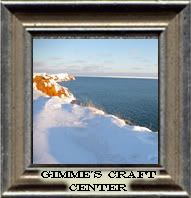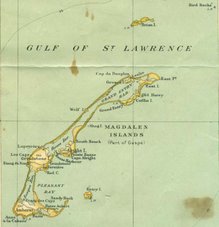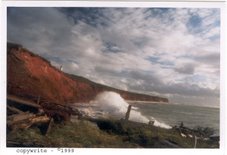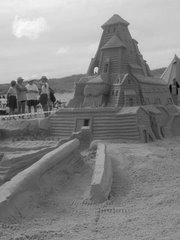CTMA Vessel IceBound Between MI/IM and PEI
+Sir+William+Alexander.jpg) The normal sail for the car ferry between Souris, PEI and Grindstone, Magdalen Islands is five hours - six hours in icy waters. The Madeleine is normally the ship that makes the sail, although the Voyager sometimes takes the Madeleine’s place when there are mechanical problems or she adds to the Madeleine, when the ship is running with a full load and there are vehicles backed up on the wharf waiting. Yesterday and part of today the ferry took 31 hours. The ship left Grindstone at 1:00 am Tuesday morning and arrived this afternoon at Souris harbour.
The normal sail for the car ferry between Souris, PEI and Grindstone, Magdalen Islands is five hours - six hours in icy waters. The Madeleine is normally the ship that makes the sail, although the Voyager sometimes takes the Madeleine’s place when there are mechanical problems or she adds to the Madeleine, when the ship is running with a full load and there are vehicles backed up on the wharf waiting. Yesterday and part of today the ferry took 31 hours. The ship left Grindstone at 1:00 am Tuesday morning and arrived this afternoon at Souris harbour.The CTMA vessel became imprisoned in an ice pan south of the islands until the light-duty ice breaker, the Canadian Coast Guard Ship (CCGS) Sir William Alexander, could come to break the ship free. “The ice was very thick,” recalled one of the attendants aboard the ice breaker. “The vessel was already blocked by the ice before the ice breaker arrived and the (CCGS) Sir William Alexander became caught up in the ice also, after a period of time because the Gulf sea had closed the ice in and around the breaker each time it advanced a little.”
According to Steve Comeau, manager of the rescue, “it was difficult to obtain information from the crew of the ice breaker, because the manoeuver to disengage the CTMA vessel required the attention of the entire Coast Guard crew.”
All I can say is, "What a mess we must have out there. I only hope that merchants got in enough stock for winter, instead of depending on the ships sailing the next two months."
On a brighter side of things, the chances are that we shall be able to watch the seal birthing their pups from the capes this year. Chances are that the tourist industry and motels will do well also with seal watchers coming for an adventure holiday. That is if the economy hasn't got the tourists squeamish about spending lots of money.

On another note, I haven't heard if the Vancancier has been released for the ice near Matane. If not, I imagine the passengers will be either flown to their destinations or go be rail. I can't imagine CTMA keeping the passengers on a ship, when they are so close to land.

























